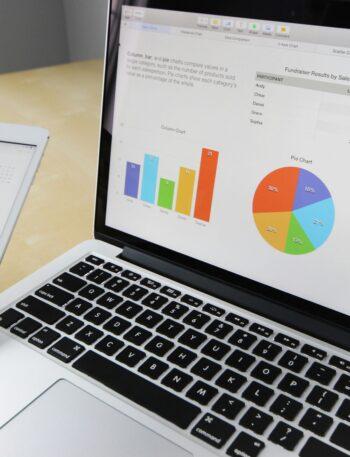Introduction
The Role of Data Analytics in Modern Marketing Campaigns
In today’s digital landscape, data analytics has become a game-changer for modern marketing campaigns. As businesses strive to capture the attention of increasingly savvy consumers, leveraging data analytics provides a competitive edge by offering insights into customer behavior, campaign performance, and market trends. This comprehensive guide explores the critical role of data analytics in marketing and how it can be harnessed to optimize campaigns and drive business success.
1. The Power of Data Analytics in Marketing
Data analytics involves examining data sets to draw actionable insights and make informed decisions. In marketing, it means analyzing data collected from various sources to understand customer behavior, measure campaign effectiveness, and refine strategies. By leveraging data analytics, marketers can move beyond intuition and guesswork, relying on concrete evidence to guide their decisions.Marketing Campaigns.
Also Read: /personal-finance-101/
a. Enhanced Customer Insights
Data analytics allows marketers to gain a deep understanding of their customers. Through analysis of demographic data, purchase history, browsing behavior, and social media interactions, marketers can create detailed customer profiles. These insights help in segmenting the audience, personalizing communication, and predicting future behavior.
b. Improved Targeting and Personalization
One of the key benefits of data analytics is the ability to target the right audience with personalized messages. By analyzing customer data, marketers can tailor their content, offers, and promotions to specific segments, increasing the relevance of their campaigns. Personalized marketing has been shown to improve engagement rates and drive higher conversions.
c. Data-Driven Decision Making
Data analytics shifts marketing decisions from gut feelings to evidence-based choices. Marketers can test different strategies, measure their impact, and adjust tactics in real-time based on data. This iterative approach leads to more effective campaigns and better allocation of resources.Marketing Campaigns.
2. Key Data Analytics Tools and Techniques
To leverage data analytics effectively, marketers use a range of tools and techniques. Here are some of the most important ones:
a. Google Analytics
Google Analytics is a powerful tool for tracking website performance. It provides insights into visitor behavior, traffic sources, and conversion rates. Marketers can use this data to understand which channels drive the most traffic, which pages are most popular, and where visitors drop off.Marketing Campaigns.
b. Social Media Analytics
Social media platforms like Facebook, Instagram, and Twitter offer built-in analytics tools that provide data on engagement, reach, and audience demographics. Marketers can use these insights to assess the performance of their social media posts, understand audience preferences, and optimize their social media strategies.Marketing Campaigns.
c. Customer Relationship Management (CRM) Systems
CRM systems like Salesforce and HubSpot collect and analyze data related to customer interactions and sales activities. They help marketers track leads, monitor customer journeys, and manage relationships. CRM data is valuable for understanding customer needs, predicting future behavior, and personalizing marketing efforts.
d. A/B Testing
A/B testing involves comparing two versions of a marketing asset (e.g., an email, landing page, or ad) to determine which performs better. By analyzing metrics such as click-through rates and conversion rates, marketers can identify the most effective elements and refine their campaigns accordingly.
e. Predictive Analytics
Predictive analytics uses historical data and statistical algorithms to forecast future trends and behaviors. For example, predictive models can help marketers anticipate customer churn, identify potential high-value customers, and optimize pricing strategies.
3. The Impact of Data Analytics on Campaign Performance
Data analytics plays a crucial role in enhancing the performance of marketing campaigns. Here’s how it makes a difference:
a. Optimizing Marketing Channels
Data analytics helps marketers determine which marketing channels deliver the best results. By analyzing channel performance metrics, such as ROI and conversion rates, marketers can allocate budgets more effectively and focus on the channels that drive the highest returns.Marketing Campaigns.
b. Improving Content Strategy
By examining data on content performance, such as engagement rates and audience preferences, marketers can refine their content strategy. Insights from data analytics help in creating content that resonates with the target audience, leading to higher engagement and more effective campaigns.
c. Enhancing Customer Experience
Data analytics enables marketers to personalize and optimize the customer experience. By analyzing customer interactions and feedback, marketers can identify pain points, improve customer journeys, and deliver a more seamless and satisfying experience.
d. Measuring ROI and Campaign Effectiveness
One of the most significant advantages of data analytics is the ability to measure the return on investment (ROI) and effectiveness of marketing campaigns. Marketers can track key performance indicators (KPIs) such as cost per acquisition (CPA), customer lifetime value (CLV), and conversion rates to assess campaign success and make data-driven adjustments.Marketing Campaigns.
4. Case Studies: Success Stories Leveraging Data Analytics
To illustrate the impact of data analytics in marketing, here are a few success stories of companies that have effectively used data to drive their campaigns:
a. Netflix: Personalization and Recommendation Engine
Netflix uses data analytics to power its recommendation engine, which suggests movies and TV shows based on users’ viewing history and preferences. By analyzing vast amounts of data, Netflix personalizes content recommendations, leading to higher user engagement and retention.Marketing Campaigns.
b. Amazon: Dynamic Pricing and Targeted Advertising
Amazon leverages data analytics for dynamic pricing, adjusting prices based on factors such as demand, competition, and customer behavior. Additionally, Amazon uses data to deliver targeted advertising, displaying relevant ads to users based on their browsing and purchasing history.
c. Starbucks: Location-Based Promotions and Customer Engagement
Starbucks uses data analytics to offer location-based promotions and personalized offers through its mobile app. By analyzing customer data and location information, Starbucks can provide relevant promotions and enhance customer engagement.
5. Challenges and Considerations in Data Analytics
While data analytics offers numerous benefits, it also presents challenges that marketers need to address:
a. Data Privacy and Security
With the increasing focus on data collection, ensuring data privacy and security is crucial. Marketers must comply with regulations such as GDPR and CCPA and implement robust security measures to protect customer data.
b. Data Integration
Integrating data from various sources can be challenging. Marketers need to consolidate data from different platforms and systems to get a comprehensive view of their audience and campaign performance.Marketing Campaigns.
c. Data Quality
The accuracy and reliability of data are essential for effective analysis. Marketers should ensure data quality by cleaning and validating data regularly to avoid incorrect insights and decisions.
d. Skill Gaps
Data analytics requires specialized skills and expertise. Marketers need to invest in training and development to build data analytics capabilities or consider partnering with data analytics professionals.
Marketing campaigns examples
1. Marketing Campaign: Nike – “Just Do It”
Goal: Inspire people of all ages and backgrounds to pursue fitness.
Strategy: Nike used emotional storytelling and featured everyday athletes alongside professionals to break the barrier of “fitness exclusivity.”
Results: This campaign became a global slogan, skyrocketed brand loyalty, and helped Nike grow its revenue by over 1,000% in 10 years.
2. Marketing Campaign: Dove – “Real Beauty”
Goal: Redefine beauty standards and connect with real women.
Strategy: Dove showcased unedited photos and videos of women of all shapes, ages, and backgrounds. They also launched the Dove Self-Esteem Project for young girls.
Results: It became one of the most talked-about campaigns, increased brand credibility, and drove significant sales growth.
3. Marketing Campaign: Zomato – “Push Notification & Meme Strategy”
Goal: Increase daily user engagement and food orders.
Strategy: Zomato used humorous, relatable push notifications and memes on social media tailored to trending topics, seasons, and user cravings.
Results: Dramatic spike in app engagement, viral content, and a strong, fun-loving brand image.
Best marketing campaigns
1. Marketing Campaign: Spotify – “Wrapped”
Goal: Increase user engagement and brand shareability.
Strategy: Every year, Spotify delivers personalized listening stats in a fun, colorful format that users can share on social media.
Results: Millions of users post their Wrapped, turning them into brand ambassadors. It boosts app engagement, user retention, and virality every December.
2. Marketing Campaign: Apple – “Shot on iPhone”
Goal: Showcase the camera quality of iPhones through real user experiences.
Strategy: Apple used real photos and videos taken by users and displayed them on billboards, social media, and commercials worldwide.
Results: Strengthened trust in product quality, built community involvement, and reinforced Apple’s premium image.
3. Marketing Campaign: Amul – “Topical Ads”
Goal: Stay relevant, funny, and connect with current events.
Strategy: Amul posts cartoon-style topical ads based on trending news, movies, politics, or pop culture almost daily.
Results: Unmatched brand recall in India, decades of consistent visibility, and viral shareability across all age groups.
Conclusion
Data analytics has revolutionized modern marketing by providing valuable insights that drive more effective and targeted campaigns. By leveraging data analytics tools and techniques, marketers can gain a deep understanding of their audience, optimize marketing strategies, and measure campaign performance with precision. While challenges such as data privacy, integration, and quality must be addressed, the benefits of data-driven decision-making far outweigh the obstacles. Embracing data analytics allows businesses to stay competitive, engage customers more effectively, and achieve their marketing goals with confidence.







